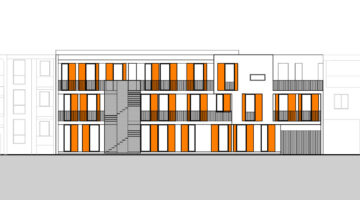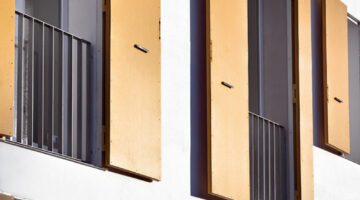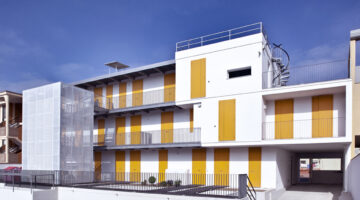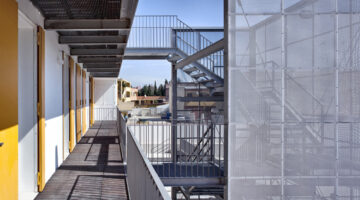






Social Housing in Elmas, Sardinia
Main objectives of the project
2+1 Officina Architettura has completed an innovative social housing project in Elmas, Sardinia. The building, with its simplified design and economical materials, has a white façade with mustard shutters and uses balconies and brise soleil for solar management. The north-south orientation and access through an inner courtyard promote energy efficiency and social integration, adapting to the local climate and environment.
Date
- 2010: Construction
Stakeholders
- Architect: 2+1 Officina Architettura
Location
Country/Region: Italy
Description
Sardinia, like many islands, faces significant challenges in housing due to speculative pressures and limited space. For this reason, social housing must be enhanced and fostered, taking into consideration the needs of its people, the climate and the integration of the building in the environment. Addressing these issues, 2+1 Officina Architettura recently completed a housing project in Elmas, a small town in southern Sardinia. The new housing structure, strictly aligned along the street, stands out with its white color, acting as a canvas for the mustard-yellow shutters. These shutters, in two different sizes, create a vibrant play of open and closed spaces. Access to the various housing units is through an inner courtyard, where the more articulated southeast facade features a continuous covered balcony connecting the mesh-covered exterior staircase with different units. The facade's openings and color palette echo the street's appearance.
Certain elements, such as the 1.5-meter cantilevering balcony and the exterior staircases, are uniquely shaped to meet program requirements. The designers' expertise strips away redundant layers, emphasizing the core values of these elements. This innovative design by 2+1 challenges a market-driven approach to building practices.
The building's north-south orientation influences the layout of interior spaces, with sleeping areas placed to the north and living areas to the south. Summer solar radiation is controlled through a walkway balcony and brise soleil screen, optimized to respond to seasonal solar variations. On the north side, full shutter panels provide additional protection from cold winds.
Economic resource optimization is achieved through a simplified building geometry, careful selection of construction materials, and the use of readily available local technologies. Materials like Abet laminate Meg offer high weather resistance and reduced construction costs.
Each housing unit is accessed via an internal courtyard, served by external stairs and walkway balconies. This design enhances social security in the peripheral context of the building's location and promotes cohabitation and social integration.

